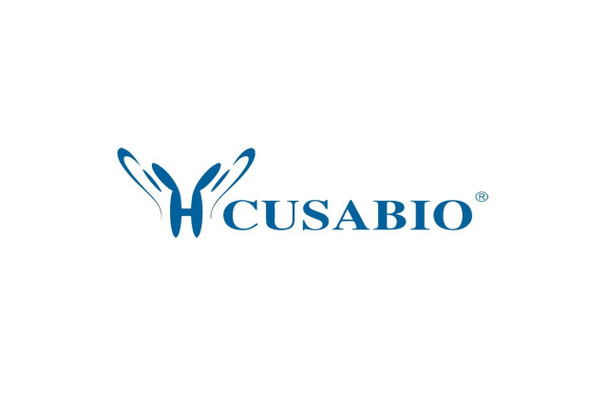Cusabio Human Recombinants
Recombinant Human E3 ubiquitin-protein ligase SIAH1 (SIAH1) | CSB-EP818230HU
- SKU:
- CSB-EP818230HU
- Availability:
- 13 - 23 Working Days
Description
Recombinant Human E3 ubiquitin-protein ligase SIAH1 (SIAH1) | CSB-EP818230HU | Cusabio
Alternative Name(s): Seven in absentia homolog 1
Gene Names: SIAH1
Research Areas: Neuroscience
Organism: Homo sapiens (Human)
AA Sequence: MTGKATPPSLYSWRGVLFTCLPAARTRKRKEMSRQTATALPTGTSKCPPSQRVPALTGTTASNNDLASLFECPVCFDYVLPPILQCQSGHLVCSNCRPKLTCCPTCRGPLGSIRNLAMEKVANSVLFPCKYASSGCEITLPHTEKADHEELCEFRPYSCPCPGASCKWQGSLDAVMPHLMHQHKSITTLQGEDIVFLATDINLPGAVDWVMMQSCFGFHFMLVLEKQEKYDGHQQFFAIVQLIGTRKQAENFAYRLELNGHRRRLTWEATPRSIHEGIATAIMNSDCLVFDTSIAQLFAENGNLGINVTISMC
Source: E.coli
Tag Info: N-terminal GST-tagged
Expression Region: 1-313aa
Sequence Info: Full Length of Isoform 2
MW: 61.6 kDa
Purity: Greater than 90% as determined by SDS-PAGE.
Relevance: E3 ubiquitin-protein ligase that mediates ubiquitination and subsequent proteasomal degradation of target proteins. E3 ubiquitin ligases accept ubiquitin from an E2 ubiquitin-conjugating enzyme in the form of a thioester and then directly transfers the ubiquitin to targeted substrates. Mediates E3 ubiquitin ligase activity either through direct binding to substrates or by functioning as the essential RING domain subunit of larger E3 complexes. Triggers the ubiquitin-mediated degradation of many substrates, including proteins involved in transcription regulation (ELL2, MYB, POU2AF1, PML and RBBP8), a cell surface receptor (DCC), the cell-surface receptor-type tyrosine kinase FLT3, the cytoplasmic signal transduction molecules (KLF10/TIEG1 and NUMB), an antiapoptotic protein (BAG1), a microtubule motor protein (KIF22), a protein involved in synaptic vesicle function in neurons (SYP), a structural protein (CTNNB1) and SNCAIP. Confers constitutive instability to HIPK2 through proteasomal degradation. It is thereby involved in many cellular processes such as apoptosis, tumor suppression, cell cycle, axon guidance, transcription regulation, spermatogenesis and TNF-alpha signaling. Has some overlapping function with SIAH2. Induces apoptosis in cooperation with PEG3. Upon nitric oxid (NO) generation that follows apoptotic stimulation, interacts with S-nitrosylated GAPDH, mediating the translocation of GAPDH to the nucleus. GAPDH acts as a stabilizer of SIAH1, facilitating the degradation of nuclear proteins.
Reference: "Characterization of human homologs of the Drosophila seven in absentia (sina) gene." Hu G., Chung Y.-L., Glover T., Valentine V., Look A.T., Fearon E.R. Genomics 46:103-111(1997)
Storage: The shelf life is related to many factors, storage state, buffer ingredients, storage temperature and the stability of the protein itself. Generally, the shelf life of liquid form is 6 months at -20?/-80?. The shelf life of lyophilized form is 12 months at -20?/-80?.
Notes: Repeated freezing and thawing is not recommended. Store working aliquots at 4? for up to one week.
Function: E3 ubiquitin-protein ligase that mediates ubiquitination and subsequent proteasomal degradation of target proteins. E3 ubiquitin ligases accept ubiquitin from an E2 ubiquitin-conjugating enzyme in the form of a thioester and then directly transfers the ubiquitin to targeted substrates. Mediates E3 ubiquitin ligase activity either through direct binding to substrates or by functioning as the essential RING domain subunit of larger E3 complexes. Triggers the ubiquitin-mediated degradation of many substrates, including proteins involved in transcription regulation (ELL2, MYB, POU2AF1, PML and RBBP8), a cell surface receptor (DCC), the cell-surface receptor-type tyrosine kinase FLT3, the cytoplasmic signal transduction molecules (KLF10/TIEG1 and NUMB), an antiapoptotic protein (BAG1), a microtubule motor protein (KIF22), a protein involved in synaptic vesicle function in neurons (SYP), a structural protein (CTNNB1) and SNCAIP. Confers constitutive instability to HIPK2 through proteasomal degradation. It is thereby involved in many cellular processes such as apoptosis, tumor suppression, cell cycle, axon guidance, transcription regulation, spermatogenesis and TNF-alpha signaling. Has some overlapping function with SIAH2. Induces apoptosis in cooperation with PEG3. Upon nitric oxid (NO) generation that follows apoptotic stimulation, interacts with S-nitrosylated GAPDH, mediating the translocation of GAPDH to the nucleus. GAPDH acts as a stabilizer of SIAH1, facilitating the degradation of nuclear proteins.
Involvement in disease:
Subcellular Location: Cytoplasm, Nucleus
Protein Families: SINA (Seven in absentia) family
Tissue Specificity: Widely expressed at a low level. Down-regulated in advanced hepatocellular carcinomas.
Paythway: p53signalingpathway
Form: Liquid or Lyophilized powder
Buffer: If the delivery form is liquid, the default storage buffer is Tris/PBS-based buffer, 5%-50% glycerol. If the delivery form is lyophilized powder, the buffer before lyophilization is Tris/PBS-based buffer, 6% Trehalose, pH 8.0.
Reconstitution: We recommend that this vial be briefly centrifuged prior to opening to bring the contents to the bottom. Please reconstitute protein in deionized sterile water to a concentration of 0.1-1.0 mg/mL.We recommend to add 5-50% of glycerol (final concentration) and aliquot for long-term storage at -20?/-80?. Our default final concentration of glycerol is 50%. Customers could use it as reference.
Uniprot ID: Q8IUQ4
HGNC Database Link: HGNC
UniGene Database Link: UniGene
KEGG Database Link: KEGG
STRING Database Link: STRING
OMIM Database Link: OMIM









